After too hastily upgrading to EF 5.0.0.0 RC and being stuck with a .NET 4.5 project that wouldn't deploy to Windows Azure (.NET 4.0 and below), I decided to downgrade to EF 4.3.1.0.
I'm unsure of the best way to perform this type of migration but my strategy is to use "Manage NuGet Packages" identify which projects reference the package, uncheck the package from each project, install the replacement and recheck the correct projects.
Unfortunately, after doing this, my solution produced the titular "FileLoadException".
Could not load file or assembly 'EntityFramework, Version=5.0.0.0, Culture=neutral,
PublicKeyToken=b77a5c561934e089' or one of its dependencies. The located assembly's
manifest definition does not match the assembly reference. (Exception from HRESULT: 0x80131040)
I searched through the solution files particularly packages.config for references to EF 5.0.0.0 RC but could find none.
